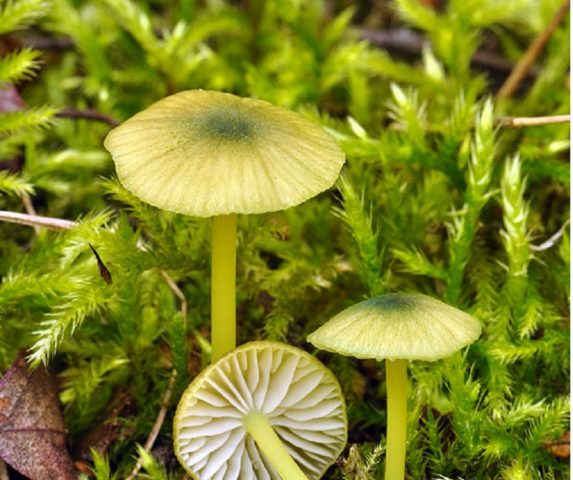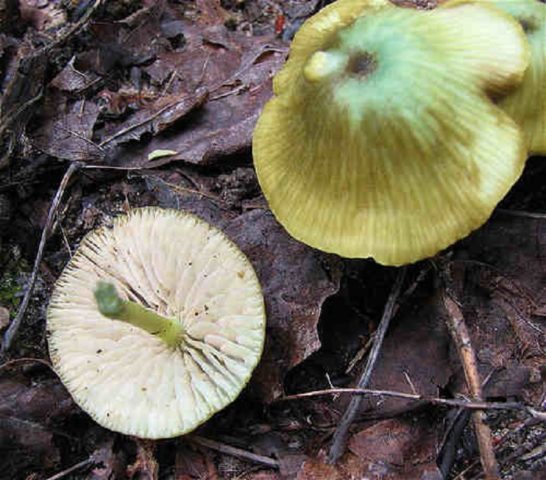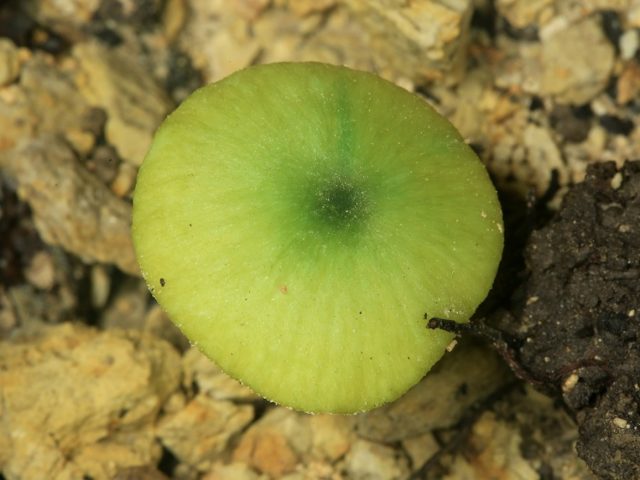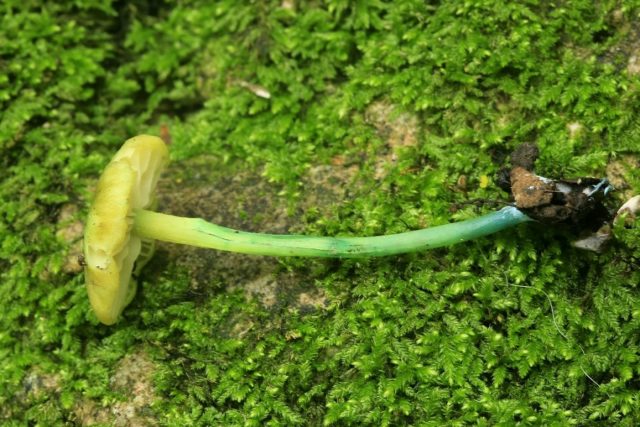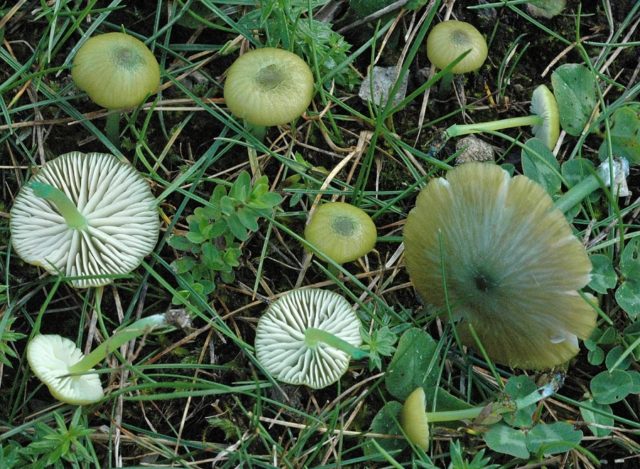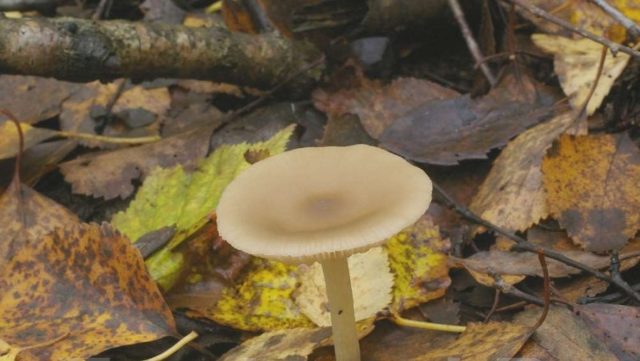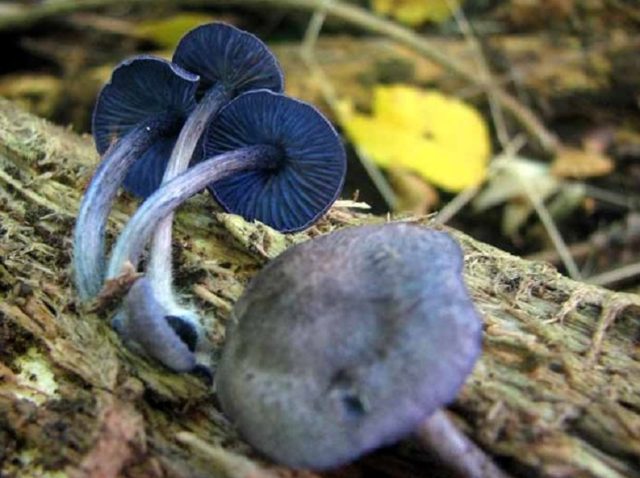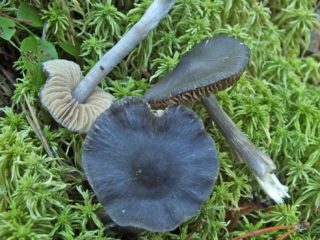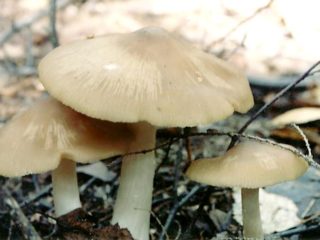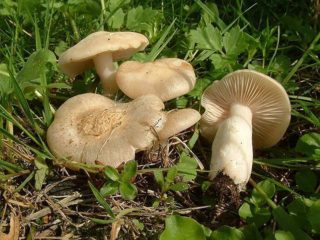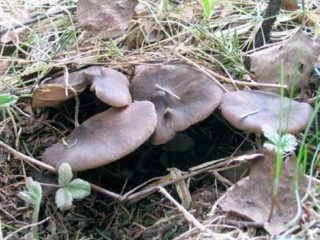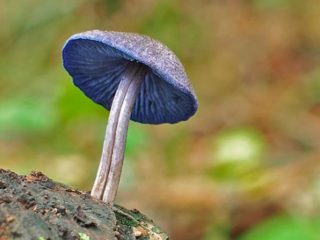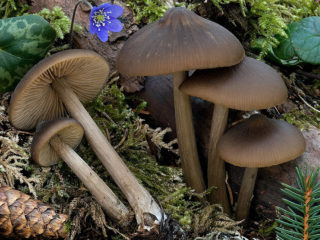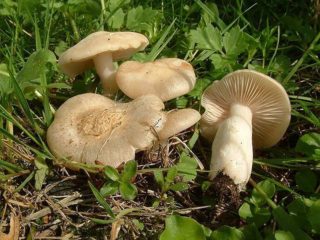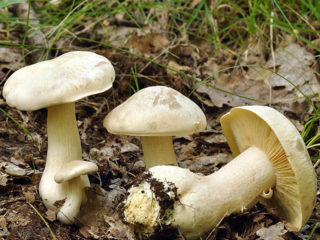Content
Entoloma grayish (grayish leptonia) is a representative of the genus Entola subgenus Leptonia (Leptonia). The mushroom is rather peculiar, therefore, its description and photo will be of great help to lovers of "quiet hunting".
Description of grayish Leptonia
Scientific literature records two Latin names - Entoloma incanum and Leptonia euchlora. You can use any of them to search for data about the mushroom.
Description of the hat
The cap changes shape as the fruiting body develops. At first, it is convex, then it flattens out, becomes flat.
Then it looks slightly sunken in the middle. The diameter of the cap is small - from 1 cm to 4 cm.
Sometimes the center is covered with scales. The color of the cap varies in olive tones from light to rich, sometimes golden or dark brown. The color of the center of the circle is darker.
The plates are not frequent, wide. Slightly arcuate. The pulp has a mouse-like odor, which can be considered a characteristic feature of the fungus.
Leg description
This part of the mushroom is slightly pubescent, has a cylindrical shape with a thickening towards the base.
The height of the mature leg is 2-6 cm, diameter 0.2-0.4 cm. Inside it is hollow, colored yellowish-green. The base of the stem of the entoloma is almost white; in mature mushrooms it acquires a blue tint. Leg without ring.
Is the mushroom edible or not
Leptonia grayish is classified as a poisonous mushroom. When consumed, a person has signs of severe poisoning. The fungus is considered a life-threatening species.
Where and how grayish leptonia is common
It belongs to the rare species of the family. Prefers sandy soils, mixed or deciduous forests. Likes to grow on forest edges, roadsides or meadows. In Europe, America and Asia, the species is quite common. On the territory of the Leningrad Region, it is included in the list of mushrooms in the Red Book. Grows in small groups, as well as singly.
Fruiting occurs at the end of August and the first decade of September.
Doubles and their differences
Grayish Leptonia (Grayish Entoloma) can be mistaken for some types of yellow-brown entoloma. Among them there are edible and poisonous representatives:
- Entoloma depressed (pressed down) or Entoloma rhodopolium. In dry weather, the hat is gray or olive brown, which can be misleading. Bears fruit at the same time as the grayish entoloma - August, September. The main difference is the strong smell of ammonia. It is considered an inedible species, in some sources it is classified as poisonous.
- Entoloma brightly colored (Entoloma euchroum). Also inedible with a characteristic purple cap and blue plates. Its shape changes with age from convex to concave. Fruiting lasts from late September to mid-October. The smell of the pulp is very unpleasant, the consistency is fragile.
Conclusion
Grayish entoloma (grayish leptonia) is a rather rare species. Its toxic properties are dangerous to human health.Knowing the signs and time of fruiting will protect against the possible ingress of fruiting bodies into the mushroom picker's basket.
